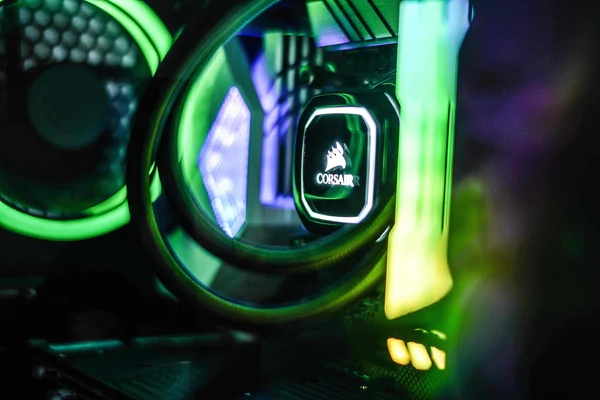Three things to consider before investing in esports

Gaming is a massive market, valued at between $100 and $150 billion worldwide. As the audience for streaming games and competitive gaming—known as electronic sports, or esports—has grown, so has brands’ interest. This portion of the gaming market has reportedly reached upwards of 350 million people globally.
While these numbers are impressive, it’s important to understand that the audience is heavily fragmented both geographically and by game title, each of which is more or less structured (franchise vs. relegation model). For instance, gamers who purchase individual titles may not necessarily play online, and many audiences prefer to stream games on platforms like Twitch or YouTube. While esports audiences have grown rapidly in recent years, whether esports will cross the chasm to become fully mainstream on par with traditional sports remains to be seem. For brand marketers looking for a way to engage in this space, it can be challenging.
Sports leagues have also taken an interest in esports, creating their own leagues with existing video game titles such as FIFA, Madden (NFL), NBA2K, and NHL, but none of these are top-20 game titles played or watched via streaming. A safe bet for sponsors of traditional sports might be to transition to esports through the league’s virtual teams, though this is not necessarily where they will reach important and elusive audiences.
The most popular games, including League of Legends, Minecraft, Fortnite, Overwatch, and DOTA 2, are set in imaginary and fantastic environments. This may be where brands lose their bearings with regards to esports. How can they fit into these weird, invented worlds? The answer is through the audiences.
Esports audiences are tech savvy, predominantly young males who tend to shun traditional media (60% don’t watch TV in any given week). Fans are heavily invested in the category. They reportedly stream an average of one hour a day, and one segment supposedly consumes more than 20 hours a week. As stereotypes begin to fade, this area is now being taken more seriously. More than 50 U.S. colleges now have esports teams. Interestingly for brands, gamers form close bonds, very much like sports communities.
Watching esports isn’t a passive affair; this is a world of inside jokes, jargon, and memes. Streaming platforms allow audiences to comment on, and even reward, their favourite players with points, which can later be translated into cash.
Brands, however, should be cautioned: those who venture clumsily into this arena may end up being the butt of jokes, as numerous homemade memes created by esports fans will attest.
What is the implication for sponsorship marketing?
After advertising and media rights, sponsorship is the most important revenue stream for leagues.
Those organized along a more structured, franchised model are more attractive to corporate sponsors because they are likely to be more stable in the long term since they require a buy-in for a predetermined number of fixed teams. League of Legends (Riot Games) requires a $10 million fee, and Overwatch League (Activision Blizzard) commands a $20 million price tag for a team.
Just as with traditional sports, the esports space offers multiple entry points through which partnerships can be forged, including players (and their personal streams), teams and team facilities, arenas, broadcasts, post-game shows, and league levels. But what might the potential impact be of aligning a brand with violent games, as many of them are?
Non-endemic brands (meaning brands that aren’t directly linked to the esports sphere, such as computer components or gaming accessories) are jumping on the bandwagon for the first time to ride this wave of excitement. The most notable categories are in the automotive, financial, and food and beverage sectors. High-profile brands that have also recently announced agreements in esports over the past year include MasterCard, Nike, and BMW.
Nike leads the pack, as it moves into esports via a four-year partnership with China’s League of Legends Pro League (which includes 16 professional teams) to provide the official team kits, hoping to reap revenues through the sale of team merchandise. League of Legends was the most popular content on both Twitch and YouTube in 2018, and, according to various accounts, China is either the first- or second-largest esports market behind the U.S. While League of Legends teams have other kit agreements with Puma, Adidas, and Umbro, Nike’s is much larger in scope.
KFC is also using esports to reach a young demographic in the Chinese market, with a League of Legends team Royal Never Give Up (RNG). This extensive partnership includes RNG toys as well as special meals and an exclusive store. It is reported that the previous instalment of this agreement helped KFC grow its customer base in China by 5%.
Three things to consider before investing in esports:
- Spillover effect: Consider the impact on your brand if an alignment with a specific esports title were to spill over into mainstream media and reach your existing consumers. Would their perceptions be affected? How would other property partners reflect on your brand?
- Relevance: Will your partnership bring value to esports audiences? Are you in it for the long run and for the right reasons? What unique story will you craft to explain your presence in this space, a role that no current sponsor has taken up and, hopefully, that no competitors could emulate?
- Operationalization: Marketing communication teams will have to be set up to reach audiences in real time. You will not have the luxury of approving all messages that go out (similar to social media management, but faster). Is your company willing to relinquish some control over the message and would you welcome user-generated content?
Esports is on an upward trajectory, but because the space is currently heavily fragmented and investing in a franchise that may not exist in 10 years might seem risky, the million-dollar question now is will it challenge what we currently perceive as traditional sports a generation from now?
The pandemic has not pushed esport in the mainstream. Sport fans were patiently waiting for leagues to resume their activities, but the gaming and esports space is definitely gathering momentum and becoming a potentially interesting environment for reaching a young and engaged demographic.
